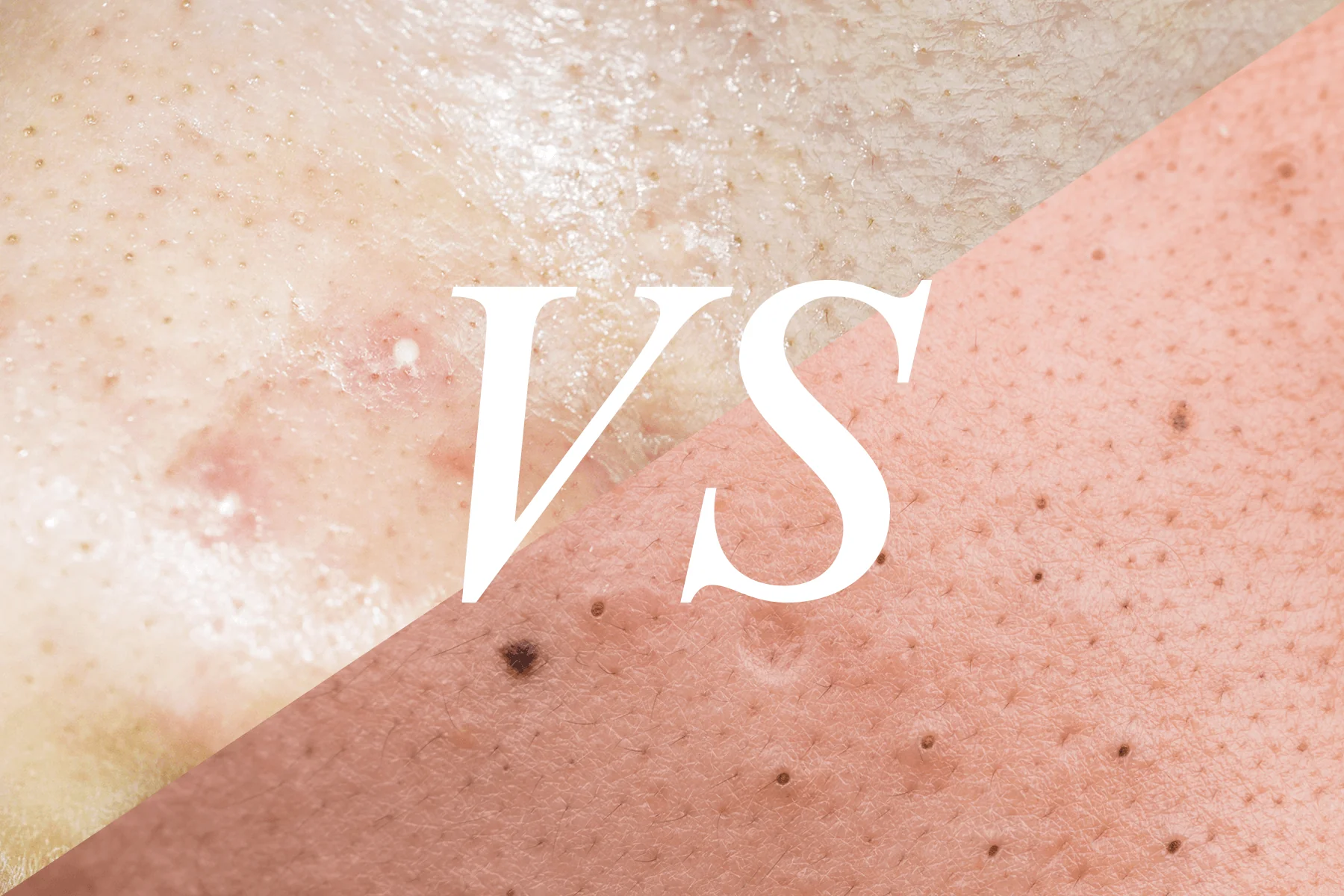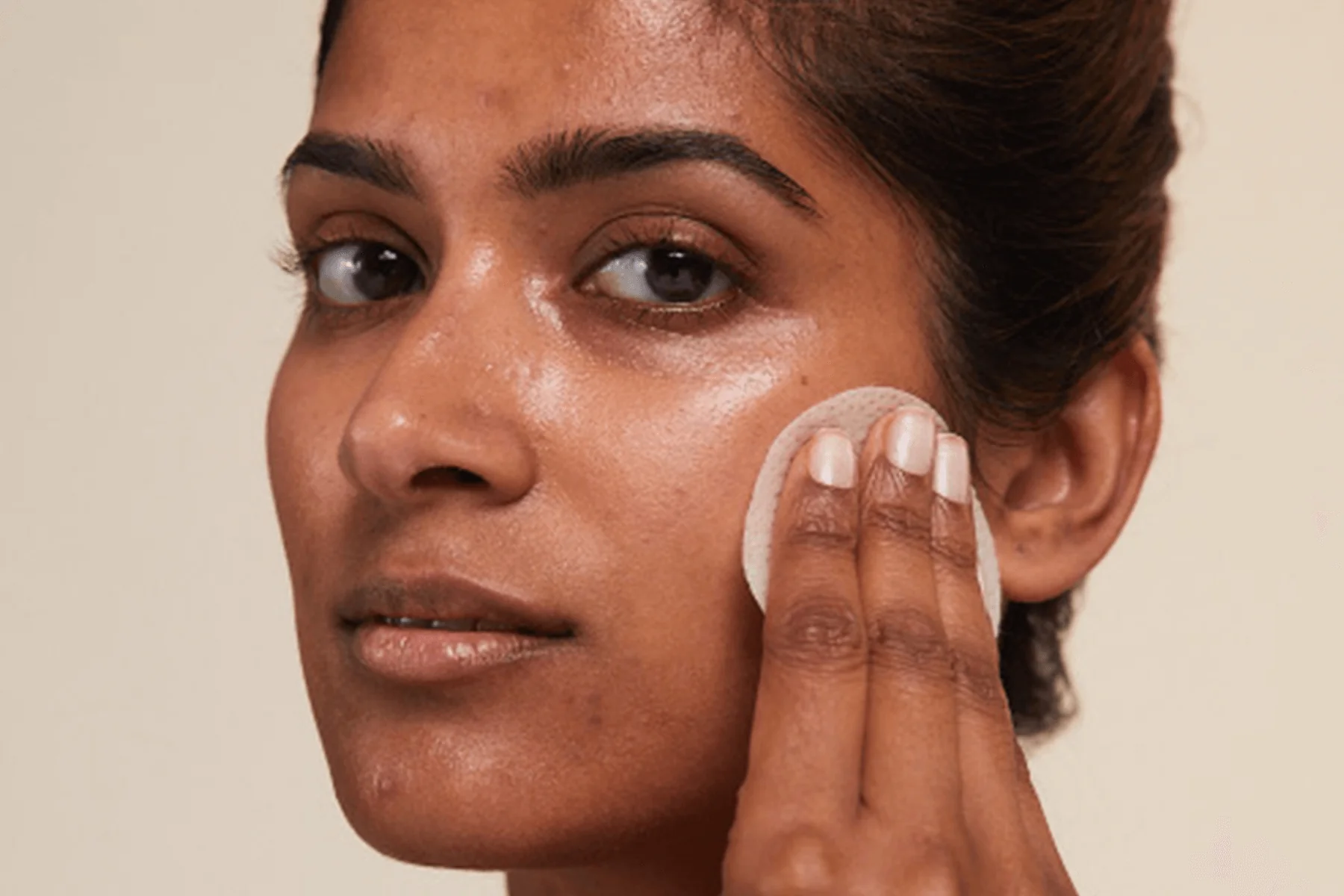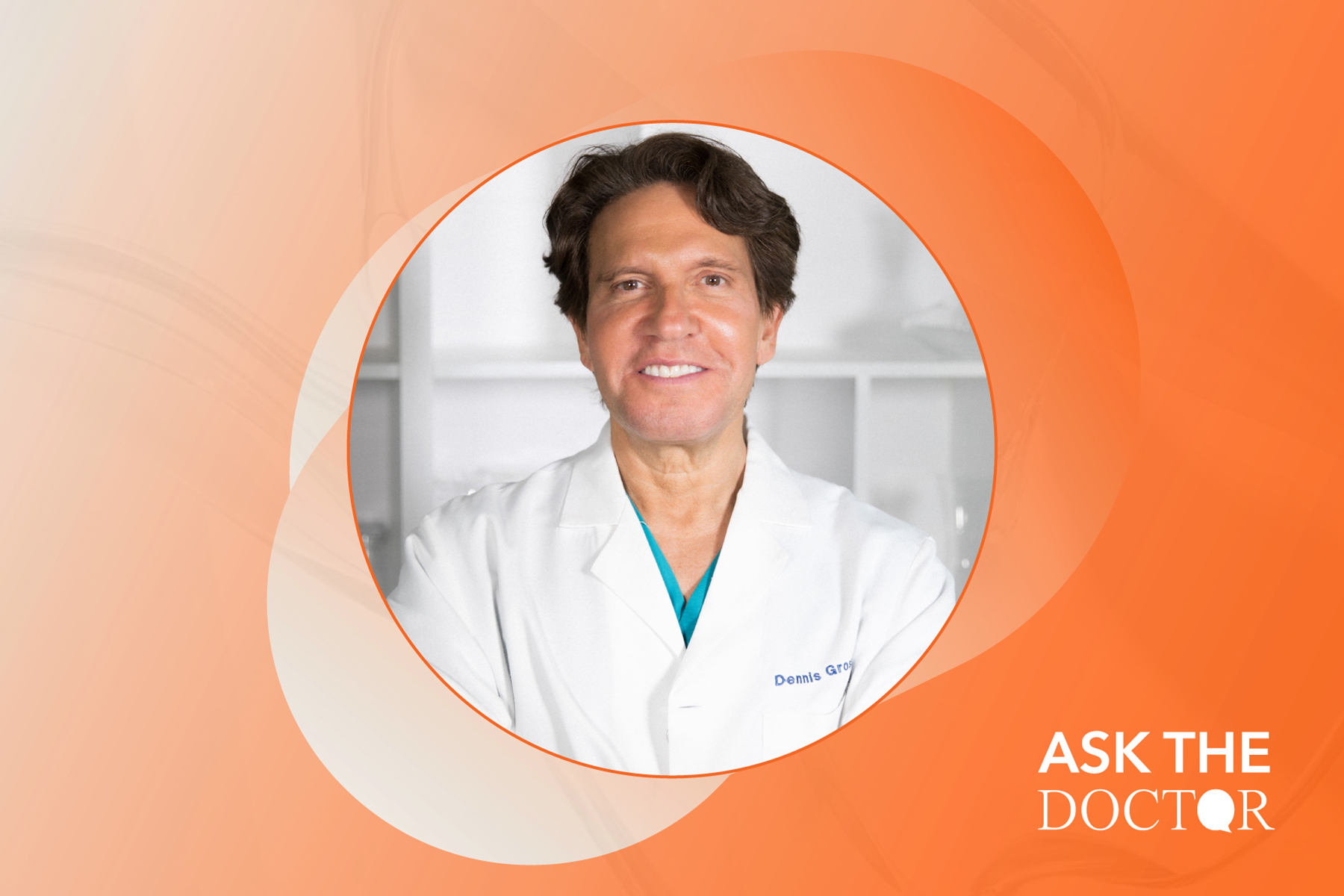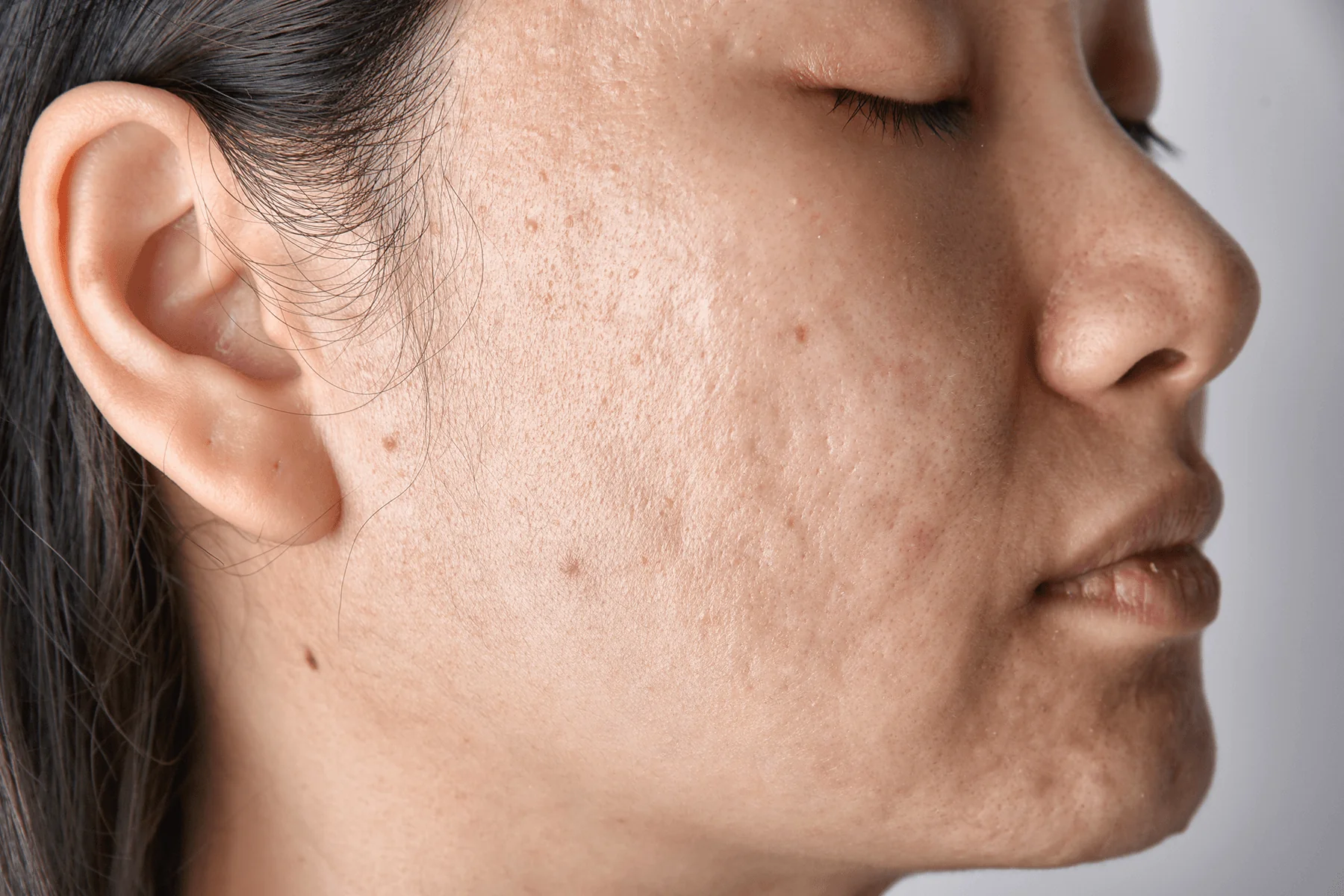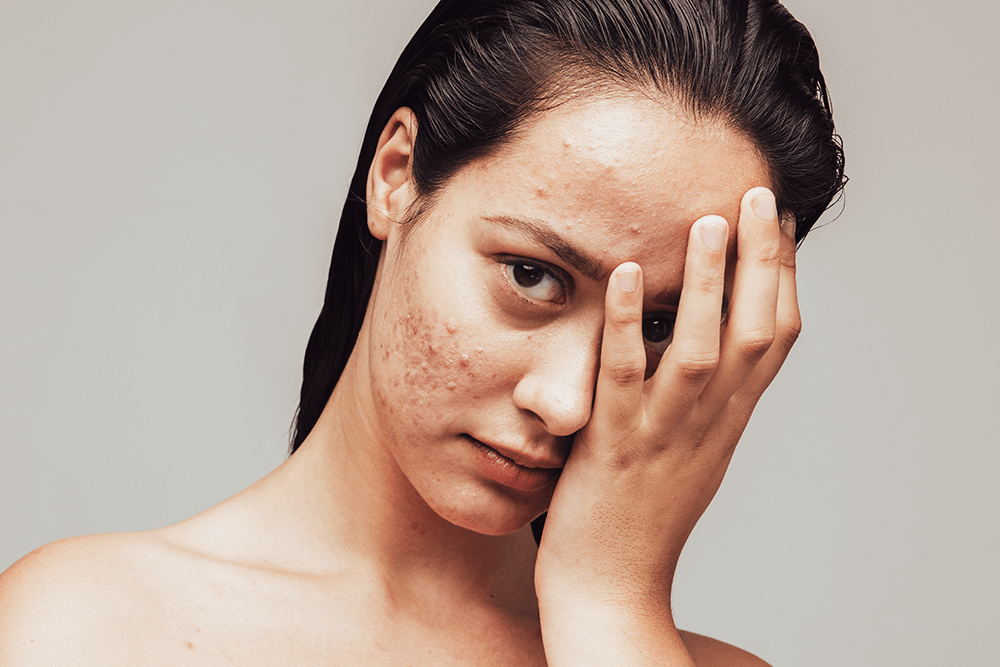The+Source
Table of Contents
You may think the difference between blackheads and whiteheads is, well, black and white, but there’s a lot more to these pesky pimples than a difference in color. While both blackheads and whiteheads have a unique and universal “talent” for popping up in all skin types (although you are more susceptible if you have oily skin), they each have district traits.
Understanding how to identify and treat each type of acne will help clear up breakouts and prevent future ones from forming. Follow the guide below for more information on the basics of blackheads vs. whiteheads and tips for maintaining clear, smooth skin.
What causes blackheads & whiteheads to form?
For starters, let’s talk pores. These little openings play a major role in the formation of non-inflammatory comedones (aka blackheads or whiteheads). Every pore has a hair follicle and sebaceous gland. The sebaceous gland produces sebum (oil) which travels up the hair follicle and lubricates the skin, keeping it soft and moisturized.
Trouble only arises when there is a change in oil chemistry, an overproduction of oil, dead skin buildup or a combination of all three. When thick, excess sebum, dead skin and trapped bacteria mix in pores, comedones form – and your good skin day is over before you know it.
How are blackheads and whiteheads different?
The main difference between blackheads and whiteheads is that blackheads form in open pores, while whiteheads form in closed pores.
When the opening of a clogged pore is uncovered and exposed to air, the mixture of sebum and dead skin cells oxidizes and turns black – hence the name blackheads. I know, I know, it’s a beautiful visual.
Whiteheads occur when a thin layer of skin covers the clogged pore and keeps it from being exposed to oxygen. Since the air never reaches the pore (aka no oxidation), the contents keep their white-yellowish color and form a closed bump on the skin.
Is it safe to remove blackheads and whiteheads yourself?
No. I’ll say it again for the people in the back. Do not attempt to pop, remove or extract blackheads or whiteheads. The 5 seconds of self-gratification is not worth the potential months or years you could spend repairing post-inflammatory hyperpigmentation (aka dark spots caused by picking, prodding or other skin trauma).
When you squeeze a blackhead or whitehead, you can actually push the p.acne bacteria deeper into pores and expose your skin to other external, infection-causing bacteria. This can lead to redness, irritation, scarring and even more breakouts. So, is it worth it? I think not.
Tips for treating & preventing blackheads and whiteheads
Cleanse Regularly
Regardless if you have problematic skin or not, the first step of your skincare routine should always be to wash your face with a non-stripping cleanser to remove pore-clogging bacteria and oil. However, let’s be clear here, this isn’t an invitation to start over washing because that can irritate your skin and make acne worse. Keep it simple and stick to face washing in the morning, after a sweat sesh, and at night, to maintain a healthy, smooth complexion.
Incorporate a Daily Chemical Exfoliant
Exfoliating is essential for treating and preventing comedonal acne, but that doesn't mean it’s time to pull out your harshest physical exfoliant. Put the walnut scrub down before anyone gets hurt. Instead, look to incorporate a chemical exfoliant with AHAs and BHAs to help shed dead skin cells and keep the pores clean and clear. We love a two-step daily peel pad with an acid and neutralizing step to limit any irritation or over-stripping.
Be Consistent with your Retinol Use
Name something that retinol doesn’t help with...we’ll wait. This superstar active is great for keeping comedonal acne at bay because it increases cellular turnover and helps to unclog pores and reduce excess sebum. If you’re looking to add retinol to your acne routine, remember that a gentle formula you can use daily is better than a strong one you can only use once per week. It may take some time to see results, but when you do, your baby-soft skin will thank you.
Keep Your Hands Off Your Face
We know how tempting it can be to touch your face, especially after you feel something that’s raised or sensitive to the touch. But try to keep in mind that your hands carry dirt, oil and bacteria that can easily spread to your pores and lead to even more breakouts.
Plus, touching can quickly escalate to picking and popping and that’s a big no-no in our book. So, if you find yourself tempted to touch your face, try and think about all of the things your hands have touched throughout the day and that will put an end to the face touching habit real quick.
